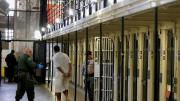As the coronavirus pandemic threatens public health and overwhelms hospitals around the country, University leaders sent a “sobering” note to the community today, noting that although “some of our Schools have announced that they intend to welcome back increased numbers of students to campus for spring semester” (notably the College, as many as 3,100 of about 6,600 undergraduates—up from about half that many in the fall term), such plans “depend on the status of the pandemic and may need to change if the situation continues to deteriorate.”
As an indication of just how much conditions have deteriorated, President Lawrence S. Bacow, Provost Alan M. Garber, and others observed, “Last Thursday, more than 7,000 new infections were reported in the Commonwealth—nearly twenty-five times the number we saw when the fall semester was getting under way; some two-thirds of cities and towns are now considered high risk for transmission, and more contagious variants of COVID-19 are starting to take hold.”
It is perhaps notable that Stanford on Saturday announced that its winter-quarter plans to house freshmen and sophomores on campus had been shelved. Stanford’s announcement cited a tenfold increase in cases per 100,000 residents in its surrounding county compared to the rate in the week before Thanksgiving. In addition, the number of students who tested positive reportedly quadrupled during the week ending January 8.
As the Harvard leaders observed, the University must be guided by state and city regulations, and its decisions will be shaped by “key indicators, including University, local, and regional infection rates, as well as hospital capacity in the Greater Boston area. Each School has developed contingency plans and will be in touch with more specific information as spring term approaches.” Although campus infection-control measures were largely adhered to during the fall term, the community prevalence of the coronavirus is greatly elevated; it is the middle of winter, when outside gatherings and activities are far more restricted than they were during much of the prior semester; and the undergraduates being invited back are upperclassmen and -women, with established social networks and activities (unlike those first-year students who were resident during the fall)—all posing real challenges.
(Updated January 11, 2021, at 7:55 p.m.: In a separate message today, Harvard College dean Rakesh Khurana expressed confidence in the behavioral and health-testing protocols the institution has in place, and therefore in moving forward, at least for now, to receive the students invited back to campus for the spring semester (which begins January 25). But one reason for his confidence may be that far fewer students than the cohort invited appear to have accepted the offer. Data have not been released since students registered their decisions on whether to return to campus for a semester of remote learning (the deadline was December 14), but Khurana indicated that although “we were at a 25 percent residential density in the fall, we expect only a modest increase in the spring to about 30 percent": perhaps 2,000 undergraduates on campus, versus capacity for 3,100—seniors and most juniors, principally—who could be accommodated in single Harvard bedrooms.0
The full text of today’s message from University leaders follows.
Dear Members of the Harvard Community,
We begin 2021 looking forward to a new semester and to continued opportunities to advance the University’s teaching and research mission in innovative ways. We also find ourselves amid a surge in the COVID-19 pandemic that is leading to record high numbers of cases worldwide and in the United States, including here in Massachusetts. Last Thursday, more than 7,000 new infections were reported in the Commonwealth—nearly twenty-five times the number we saw when the fall semester was getting under way; some two-thirds of cities and towns are now considered high risk for transmission, and more contagious variants of COVID-19 are starting to take hold.
With this sobering reality in mind, we must prioritize the public health and safety of our students, faculty, staff, and academic personnel. As you know, some of our Schools have announced that they intend to welcome back increased numbers of students to campus for spring semester. Those plans depend on the status of the pandemic and may need to change if the situation continues to deteriorate. We will continue to follow state and city regulations and to monitor key indicators, including University, local, and regional infection rates, as well as hospital capacity in the Greater Boston area. Each School has developed contingency plans and will be in touch with more specific information as spring term approaches.
We intend to do our part to ensure that the new vaccines, which promise to further limit the health risks of COVID-19, will be available as quickly as possible. HUHS is in close contact with state officials regarding their distribution. We will communicate plans as they become clearer, and we encourage you to get vaccinated when you are eligible. For the time being, each of us must remain vigilant. It is more important than ever to adhere to public health measures to flatten the curve and keep Harvard healthy. That means using masks consistently, following physical-distancing recommendations, and handwashing properly, whether you are on or off campus. Through these actions, as as well as daily Crimson Clear attestations and frequent testing, we have largely avoided disease transmission on campus.
Adaptation and restriction—and the relentlessness of COVID-19—are trying for all of us. Please know that we are so grateful to be part of a community that is mindful of the health and safety of its members and of our surrounding communities. We are deeply impressed with the work that you are undertaking, on campus and remotely, to advance our mission under strict safety measures, and we thank you for your continued patience and persistence.
Sincerely,
Lawrence S. Bacow
President
Alan M. Garber
Provost
Katie Lapp
Executive Vice President
Giang T. Nguyen
Executive Director, Harvard University Health Services









